#french history
Text
A couple of days ago I met a beautiful woman in the Moscow metro. She was holding a Starbucks cup in her hands, but inside there was not coffee, but earth and a few petals in it.
This looks absolutely like Josephine in modern AU. I’m sure she would also steal a sprout of a plant she liked from the cafe for her garden.

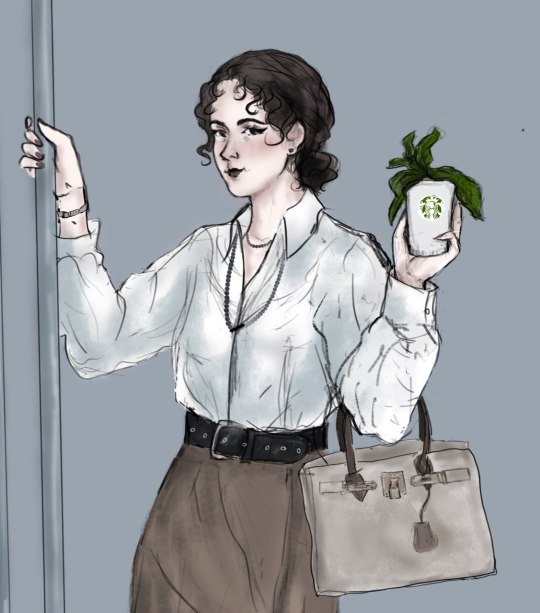
#history#french history#history art#napoleonic#josephine beauharnais#empress josephine#josephine bonaparte#napoleon and josephine#napoleon#napoleon bonaparte#modern au#art#artists on tumblr#digital art
60 notes
·
View notes
Text

little doodle i never posted HAHAH
my precious naps and juno
#art#my art#fanart#ship art#napoleonic era#napoleon#napoleon bonaparte#first french empire#napoleonic wars#jean andoche junot#napjuno#french empire#french revolution#history fanart#history fandom#history#french history
31 notes
·
View notes
Text
Citizen Cooks in the Age of Napoleon
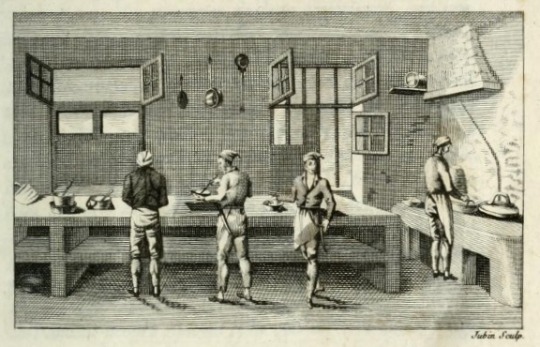
Excerpt about the role of cooks in France after the abolition of culinary guilds, and how they navigated a world which demanded for them to find new ways to stay relevant and prosperous. From Defining Culinary Authority: The Transformation of Cooking in France, 1650-1830 by Jennifer J. Davis:
French cooks sought new sites upon which to rebuild the authority of culinary labor. Throughout the early nineteenth century cooks increasingly adopted scientific terms to demonstrate their reliability and profound knowledge of the culinary arts. Such language communicated the author's education and distinction, just as an appeal to an elite patron had done in the 1660s and referral to a cook's professional expertise had done in the 1760s. The rhetoric and institutions of scientific knowledge also provided a means of distinguishing men's work from women's in the post-revolutionary era. During the early nineteenth century, cooks' claims to scientifically valuable savoir-faire rested on three crucial points of culinary innovation: food preservation, the improved production of bouillon, and gelatin extraction.
As these processes left the realm of traditional knowledge and became sites of scientific inquiry by tradespeople and amateurs alike, cooks sought to maintain authority in this arena by including scientific terms and theories in cookbooks, advertisements, and government petitions.
Two factors encouraged cooks' claims to scientific knowledge during this era. First, when Napoleon Bonaparte took the reins of government as first consul in 1799 and established himself as emperor in 1804, he raised medical doctors and academic scientists, Idéologues, to positions of political prominence. From these posts, the Idéologues subsidized experiments and inventions deemed useful to the nation and encouraged the popularization of science in the public sphere through state sponsorship of exhibitions and print forums. The Idéologues particularly supported research related to food preparation and preservation that might benefit France's armies and navies, with obvious benefits for professional cooks. Many cooks presented their particular techniques to the government during this time, seeking both financial recompense and public acclaim. Second, a voluntary association closely allied with the Idéologues' vision, the Société d'encouragement pour l'industrie nationale (Society for the Encouragement of National Industry), provided a forum in which formally trained scientists, politicians, merchants, artisans, and curious educated men might unite to address questions that inhibited French science and industry.
Together, these men sought to develop a more coherent program for industrial advancement than any one group could achieve independently. The society explicitly sought to join scientific knowledge to artisanal practical expertise, recognizing that each group had strengths that would benefit industrial development. This association invested heavily in three diffuse projects that eventually infused the most basic culinary processes with scientific awareness: new methods of food preservation to benefit the nation's armies and navies, new methods of stock preparation to sustain the nation's poor, and new methods of extracting gelatin from bones to improve hospital and military diets at little added expense.
#Illustration from L'art du Cuisinier by Antoine Beauvilliers (1814)#Defining Culinary Authority: The Transformation of Cooking in France 1650-1830#Jennifer J. Davis#David#citizen cooks#napoleon#napoleon bonaparte#napoleonic#napoleonic era#first french empire#french empire#19th century#french revolution#cooks#food#culinary history#france#1800s#history#french history#Antoine Beauvilliers#Beauvilliers#Society for the Encouragement of National Industry#Société d'encouragement pour l'industrie nationale
23 notes
·
View notes
Text
By the way, if any of you, like me, are nerds who love maps, I highly recommend checking out the Turgot map. I won't link it or tumblr will eat this post, but you can find it just by searching Wikipedia - it's an incredibly detailed 3D map of Paris made in the 1730s, and by "incredibly detailed," I mean
incredibly
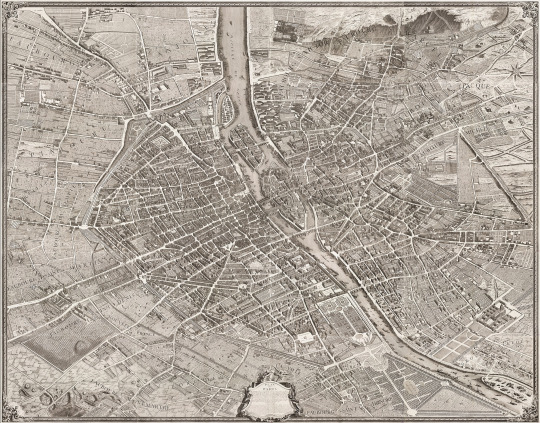
incredibly

INCREDIBLY
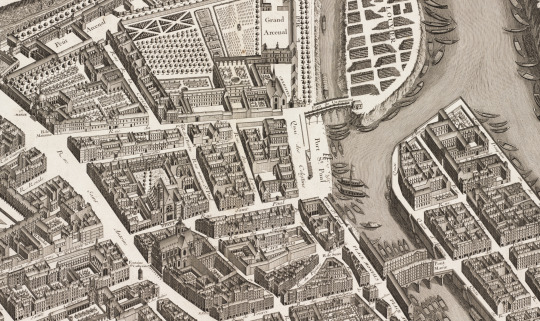
DETAILED!

Look, there's Notre Dame! Individual trees! Individual lampposts! Individual boats!! (Some of them even have little people in lol, though clearly not to scale)
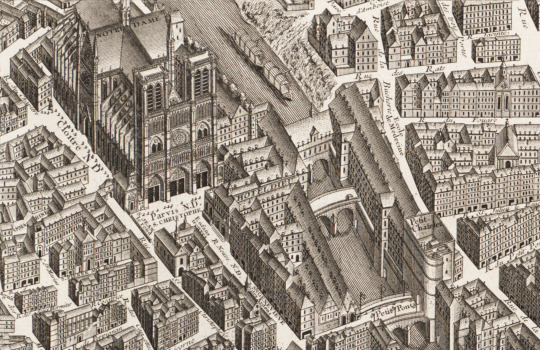
The full scan is over 35,000 pixels wide, guys! That's over 10 feet of map!! All drawn and engraved by hand! I'm freaking out a little! What an absolutely amazing piece of history & art!
#I'm slowly collecting stupidly detailed maps of Paris for book research but this is the wildest one I've found so far#and in 3D! It really gives you a sense of the city like nothing else#history#french history#Paris#maps
16K notes
·
View notes
Text

Joan of Arc Google Doodle
#joan of arc#jeanne d'arc#my art#art#artists on tumblr#artists of tumblr#france#french history#doodle#painting#digital painting
417 notes
·
View notes
Text

Last of their name
#house of valois#french history#charles ix#henri iii#françois d'alençon#marguerite de navarre#claude de france#elisabeth de france#diane de france#françois II#la reine margot
1K notes
·
View notes
Text
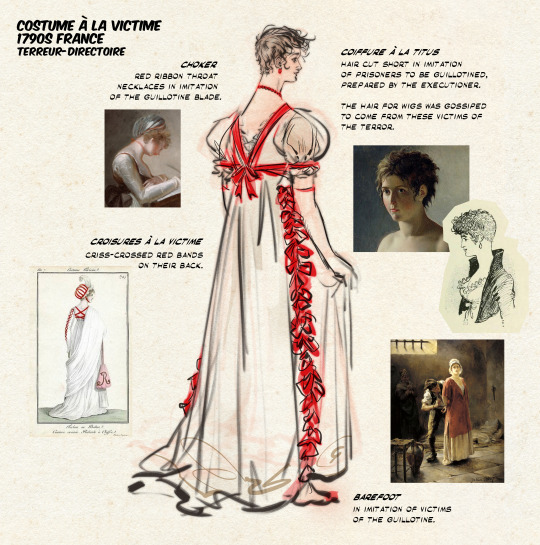
fell down the "bals de victimes" folklore rabbit hole (balls for those who lost family members to the guillotines in which guests would dress in the macabre style of the victims)... anyways, im ready to pitch my eyes wide shut au set in france under the throes of the Reign of Terror (directed by guillermo del toro, obviously)
1K notes
·
View notes
Text


I love how Brian Cox is basically leftist Logan Roy in real life.
198 notes
·
View notes
Text
Time Travel Question : Murder and Disappearance Edition I
Given that Judge Crater, Roanoke, and the Dyatlov Pass Incident are credibly solved, though not 100% provable, I'm leaving them out in favor of things ,ore mysterious. I almost left out Amelia Earhart, but the evidence there is sketchier.
Some people were a little confused. Edward V and Richard of Shrewsbury are the Princes in the Tower.
#Time Travel#Famous Murders#Jack the Ripper#La Bete du Gevaudan#Gandillon Family#Werewolves#William Rufus#King William II#Edward V#Richard of Shrewsbury#French History#English History#Early Modern Europe#Victorian England#Lord Darnley#Mary Queen of Scots#Scottish History#Amy Robsart#Lord Dudley#The Sodder Children#The Somerton Man#Australian History#Prime Minister Harold Holt#Elizabeth Short#The Black Dahlia
489 notes
·
View notes
Text
884 notes
·
View notes
Text

For International Women's Day — a portrait of a brave, invincible and independent woman who officially served in the army (both revolutionary and during the empire), who called Napoleon a "gypsy child", who was captured more than once, who adored her long hair, who once ate a delicious fried ram with Augereau (because of which she was late and was sent to the guardhouse), who organized a shelter for dogs during the war in Spain — the little dragoon "Sans-Gêne", Marie-Thérèse Figueur.

#history#french history#history art#napoleonic#therese figueur#madame sans gene#napoleon#napoleon bonaparte#french revolution
313 notes
·
View notes
Text







Women in History Month (insp) | Week 4: Dynastic Daughters
#historyedit#perioddramaedit#women in history#women in history month challenge#my edits#mine#marie anne de bourbon-conti#princess hexiao#hanzade sultan#caroline bonaparte#marie-thérèse-charlotte de france#princess fukang#gorgô of sparta#french history#chinese history#ancient greece#17th century#18th century#19th century#11th century#6th century bc#5th century bc
149 notes
·
View notes
Text
Napoleon and Nicolas Appert: The invention of canned food
“Although he [Napoleon] continued so far as possible the Revolutionary practice of having armies live off the land, he also did his best to develop an efficient commissariat. A famous part of his supply system was canned food, particularly meat, for the army. Nicholas Appert had started the food-canning industry in 1804, building a factory that employed fifty people. His method prescribed putting the food in glass jars, which were next carefully stoppered, and then cooked in boiling water for lengths of time varying with the type of food. The navy first used the canned food, with great success even on extended cruises. In 1810 the Minister of the Interior awarded Appert 12,000 francs on condition he make his process public.”
— Robert B. Holtman, The Napoleonic Revolution
The inventor of canning, Appert, deposited samples of his invention to the imperial government in 1809, specifically to the Society for the Encouragement of National Industry [Société d'Encouragement pour l'Industrie Nationale].
He published his findings in 1810, titled: Le livre de tous les ménages ou l'art de conserver pendant plusieurs années toutes les substances animales et végétales [English tr: The Art of Preserving All Kinds of Animal and Vegetable Substances For Several Years]. It was “a work published by the order of the French Minister of the Interior, on the report of the Board of Arts and Manufactures”.
For his discovery, the government paid him 12,000 francs and gave him free lodgings and a workshop in the Hospice des Quinze-Vingts. Every prefecture in the French Empire was supplied with a copy of his book, and the prefects were assigned the responsibility of disseminating the information widely. Two more editions were created under the empire, and another in 1831.
His factories were ransacked and destroyed during the invasions of France in 1814 and again in 1815. He was able to rebuild and won several gold medals from the Society for the Encouragement of National Industry and eventually became a member of the Society.
Appert is quoted as saying “I sacrificed everything for humanity, all my life”.
Additional Sources:
English translation of Appert’s 1810 publication
Nicolas Appert inventeur et humaniste, Jean-Paul Barbier, 1994 (Fondation Napoléon)
Collection A. Carême: Le conservateur 1842 (archive.org)
Defining Culinary Authority: The Transformation of Cooking in France, 1650-1830 by Jennifer J. Davis
#he’s my hero 😭#Nicolas Appert#Appert#Napoleon#napoleon bonaparte#canned food#Robert B. Holtman#Holtman#the Napoleonic revolution#napoleonic era#napoleonic#canned#canning#first french empire#french empire#19th century#history#Jean-Paul Barbier#Barbier#culinary history#french history#napoleonic wars#coalition wars#1800s#food#food history#gastronomy#Napoleonic reforms#reforms#Napoleon’s reforms
16 notes
·
View notes
Text

Robert Doisneau, Eiffel Tower, 1965
#robert doisneau#french art#french artist#french photographer#french photography#art photography#eiffel tower#tour eiffel#paris france#paris#french history#modern art#art history#aesthetictumblr#tumblraesthetic#tumblrpic#tumblrpictures#tumblr art#aesthetic#beauty#tumblrstyle
170 notes
·
View notes
Text
"As boys and men went out on the boats — “my grandfather was nine when he started,” said the local historian Arlette Julien — girls and women were in the canneries, some from the age of eight, some up to 80. They’d be called in at any time of day or night, whenever the boats came in: in pre-fridge days, sardines needed treating fast.
Dressed in long heavy skirts and clogs, the women would work up to 18 hours non-stop, go home at midnight and then be called back in at 4am. The floors were filthy with mud and sardine guts, the women’s hands wrecked by brine, toilets often a distant rumour … all for 80 centimes an hour. That 80 centimes was just enough to buy a litre of milk, half the wage of a professional washerwoman. All ages earned the same amount.
The strike struck on November 21 and within days 2,100 people were out, 1,600 of them women. The Communist mayor Daniel Le Flanchec pulled the town council behind the strike. He called in Communist support from all over France.
Thus was assured a level of organisation not experienced by earlier French strikes. Funds were raised, soup kitchens sorted, Christmas presents for children arranged and marches assembled. The strike became a national issue.
Finally, though, and after six weeks, the cannery owners were forced to negotiate. They conceded overtime payments, a ban on work for girls under 12 — and a pay rise to one franc an hour. Men got 50 centimes more. “Equal pay wasn’t an issue. The movement was born of desperation,” the history teacher Françoise Pencalet said. “The women simply wanted a little more than what they had.”
#history#women in history#women's history#women's history month#20th century#working women#bretagne#france#french history#upthebaguette#historyblr#historical figures
137 notes
·
View notes
Text

Little jeanne with a Grand Bascinet
#mine#joan of arc#jeanne d'arc#15th century#XVth century#1410s#Great bascinet#grand bassinet#armors#french history
3K notes
·
View notes